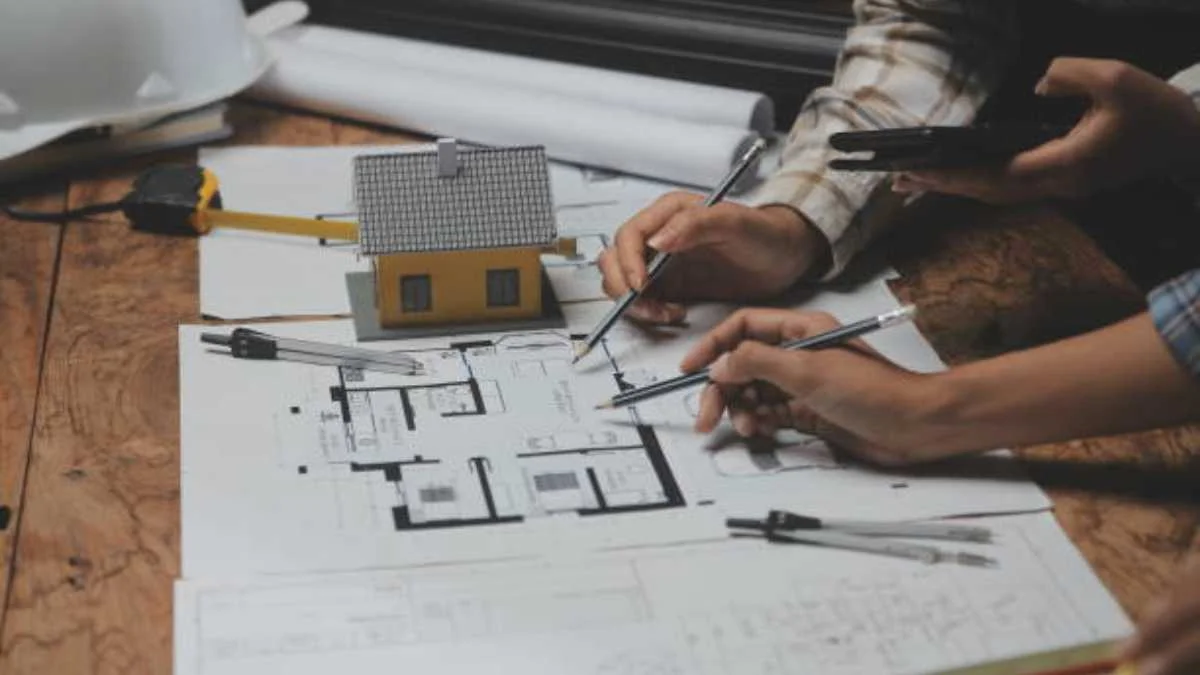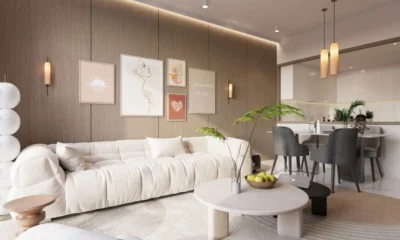HOME IMPROVEMENT
The Future of Home Additions: Integrating Modern Design and Functionality

Home additions are one of the most effective ways to expand and enhance your living space without the need for a full relocation. Whether you’re adding extra rooms, expanding your kitchen, or building a luxurious outdoor area, a well-planned home addition can significantly increase both the functionality and value of your property. Today’s modern home additions are not just about adding square footage—they’re about creating purposeful, versatile spaces that align with contemporary design trends and lifestyle needs.
In this article, we will explore how to plan and execute home additions that incorporate modern design elements while maintaining functionality and flow within the existing structure of your home.
Table of Contents
1. Assessing the Purpose of Your Home Addition
Before diving into the design and construction of a home addition, it’s important to start with a clear understanding of its purpose. Homeowners choose to build additions for various reasons—some may need more living space, while others seek to create a luxurious feature like a home theater or sunroom.
Common Reasons for Home Additions:
- Growing Family Needs: A growing family may require extra bedrooms, additional bathrooms, or a larger living area to accommodate their expanding household. A home addition can be a more cost-effective alternative to moving to a larger house.
- Creating a Multifunctional Space: Modern homeowners often prefer flexible spaces that can serve multiple purposes. For example, a home office that doubles as a guest room, or a finished basement that can be used as both a recreational area and storage space.
- Adding Luxury Features: Some homeowners choose to build additions to incorporate high-end features such as a sunroom, indoor gym, or entertainment room. These additions not only enhance the home’s functionality but also elevate its overall value and appeal.
- Increasing Home Value: Expanding the square footage of your home through a home addition is a surefire way to boost its market value. Buyers are often willing to pay more for homes with modern, well-designed spaces that meet their lifestyle needs.
Once you’ve determined the primary purpose of your home addition, you can move on to the design phase, where you’ll integrate both practicality and modern style.
2. Maximizing Natural Light and Open Space
One of the most significant design trends in home additions today is the emphasis on natural light and open space. Whether you’re adding a new living room, kitchen extension, or bedroom, maximizing the flow of natural light can make the space feel larger, more inviting, and connected to the outdoors.
Design Strategies to Maximize Natural Light:
- Large Windows and Glass Doors: Installing floor-to-ceiling windows, skylights, or sliding glass doors can flood your new space with natural light. This design choice not only brightens the room but also creates a seamless connection to outdoor areas like gardens or patios.
- Open Concept Layouts: Consider adopting an open concept design for your home addition. Removing walls or using fewer partitions between rooms allows light to flow freely throughout the space. An open layout can also enhance social interactions, making it ideal for kitchens, dining areas, and living rooms.
- Light-Reflecting Materials: Another way to enhance natural light is by choosing materials that reflect light, such as light-colored flooring, glossy countertops, or glass-tiled backsplashes. These materials help bounce light around the room, making it feel more expansive.
By prioritizing natural light and open space in your home addition, you can create a bright, airy environment that feels both modern and connected to the rest of your home.
3. Blending the Old with the New: Maintaining Cohesion in Design
One of the challenges of a home addition is ensuring that the new space blends seamlessly with the existing structure. A well-executed home addition should feel like a natural extension of your home, rather than a separate or mismatched space. To achieve this, it’s essential to strike a balance between modern design elements and the architectural style of your current home.
Tips for Maintaining Design Cohesion:
- Match Exterior Finishes: The exterior of your home addition should complement the original structure in terms of materials, color, and style. For example, if your home features brick or wood siding, ensure that the addition uses the same or similar materials for a cohesive look.
- Maintain Consistent Rooflines: The roofline of your home addition is another critical element to consider. Ensure that the roof pitch and design match the existing structure to avoid creating an awkward or disjointed appearance.
- Interior Flow and Layout: Inside the home, the new space should flow naturally from the existing rooms. This means using similar flooring, wall colors, and finishes to create continuity between the old and new areas. Consistency in design will make the transition between spaces feel seamless.
By carefully blending modern design with the existing architectural elements of your home, you can ensure that your home addition enhances the overall aesthetic and functionality of your property.
4. Designing for Multi-Functional Spaces
In today’s homes, flexibility is key. Homeowners increasingly seek spaces that can serve multiple functions, adapting to different needs as they arise. Designing a home addition with versatility in mind ensures that the space remains valuable and usable for years to come.
Multi-Functional Home Addition Ideas:
- Guest Suite and Office: If you’re adding an extra bedroom, consider incorporating features that allow the room to double as a home office. Built-in desks, pull-out beds, and flexible storage options can make the space functional for both work and guests.
- Basement Renovation: A finished basement offers endless possibilities for multi-functional use. Whether you want to create a home gym, media room, or additional storage, the basement can serve multiple purposes with the right design and layout.
- Sunroom and Entertainment Area: A sunroom is an excellent way to add both luxury and versatility to your home. With comfortable seating, the space can be used for everything from quiet reading and relaxation to hosting small gatherings and dinner parties.
When designing a multi-functional home addition, consider the long-term value of flexibility. Spaces that can evolve to meet different needs will remain useful as your family and lifestyle change over time.
5. Budgeting Smartly for a Home Addition
Building a home addition is a significant investment, so careful budgeting is essential to avoid cost overruns and ensure the project remains financially feasible. The good news is that there are ways to manage your budget while still achieving a luxurious and functional result.
Key Budgeting Tips for Home Additions:
- Preconstruction Consultations: Before breaking ground, take advantage of preconstruction consultations with your builder. During these consultations, you can outline your vision and budget, ensuring that both align. This early-stage planning will help you avoid surprises down the road and keep the project within financial limits.
- Prioritize High-Impact Features: To make the most of your budget, focus on high-impact features such as energy-efficient windows, custom cabinetry, or upgraded flooring. These elements not only enhance the functionality of your addition but also add long-term value to your home.
- Leave Room for Contingencies: It’s always a good idea to set aside a contingency budget for unexpected costs. Home addition projects can uncover surprises during construction, such as structural issues or the need for additional permits, so having extra funds set aside will keep the project on track.
By setting a realistic budget and working closely with your builder, you can ensure that your home addition is completed within financial limits without compromising on quality or style.
Conclusion
A well-designed home addition can transform your living space, adding both functionality and value to your home. By focusing on natural light, maintaining design cohesion, and incorporating flexible, multi-functional spaces, you can create an addition that meets the modern needs of your family while enhancing the overall aesthetic of your property.
For homeowners ready to explore the possibilities of a home addition, working with a trusted team like Sandhill Homes ensures that every step of the process—from preconstruction consultations to final construction—is handled with expertise and attention to detail. Whether you’re expanding for extra space or adding luxurious features, a thoughtful approach to home additions can elevate your home’s potential for years to come.
-

 GENERAL2 months ago
GENERAL2 months agoUncovering the World of кинокрадко: The Dark Side of Film Piracy
-

 GENERAL1 month ago
GENERAL1 month agoUnveiling the Art of преводсч: How Translators Bridge Language Barriers
-

 YOGA1 year ago
YOGA1 year ago4 Person Yoga Poses for Beginners
-

 GENERAL3 weeks ago
GENERAL3 weeks agoChristofle – For Those Who Dream of Family Heirloom Silver


























